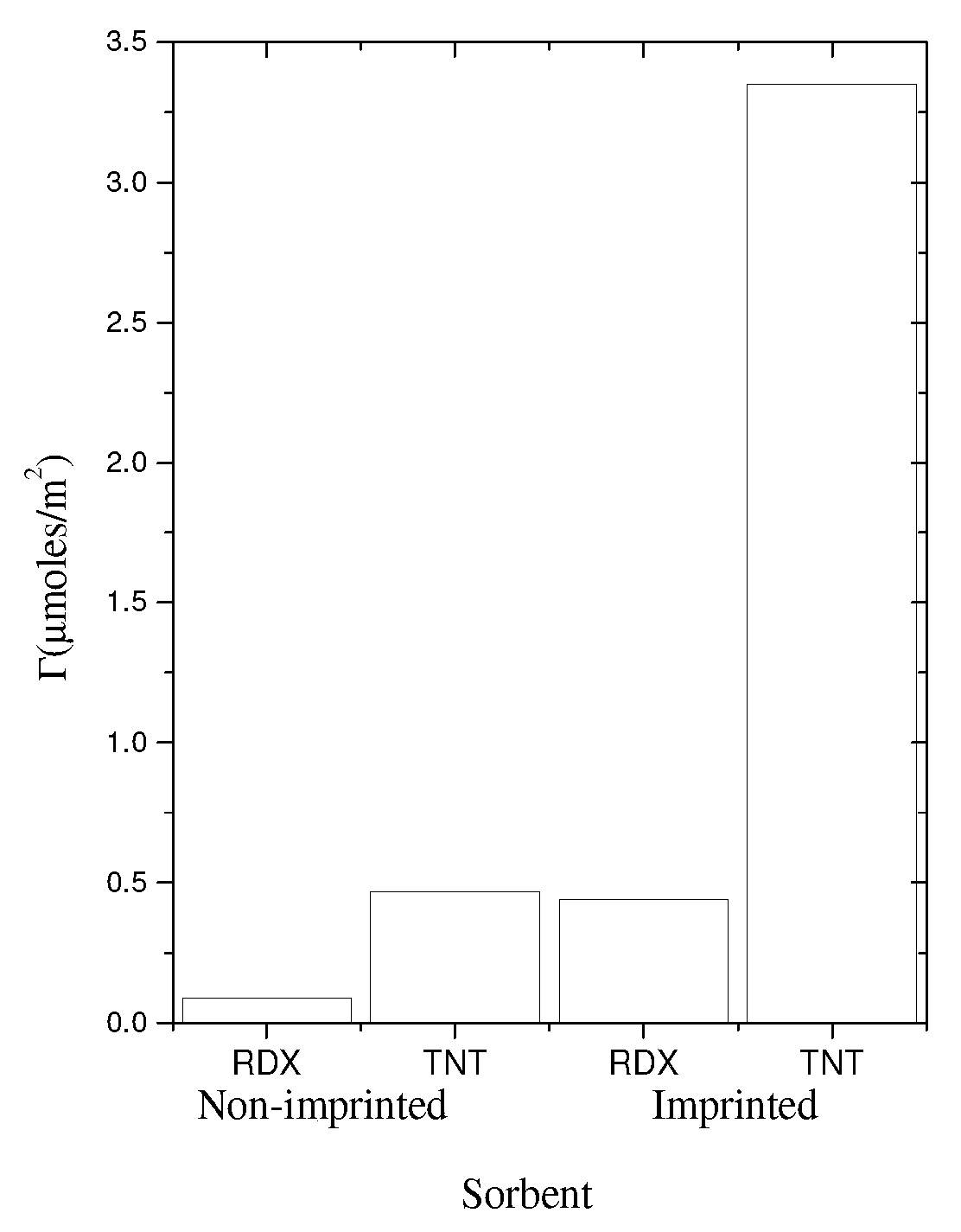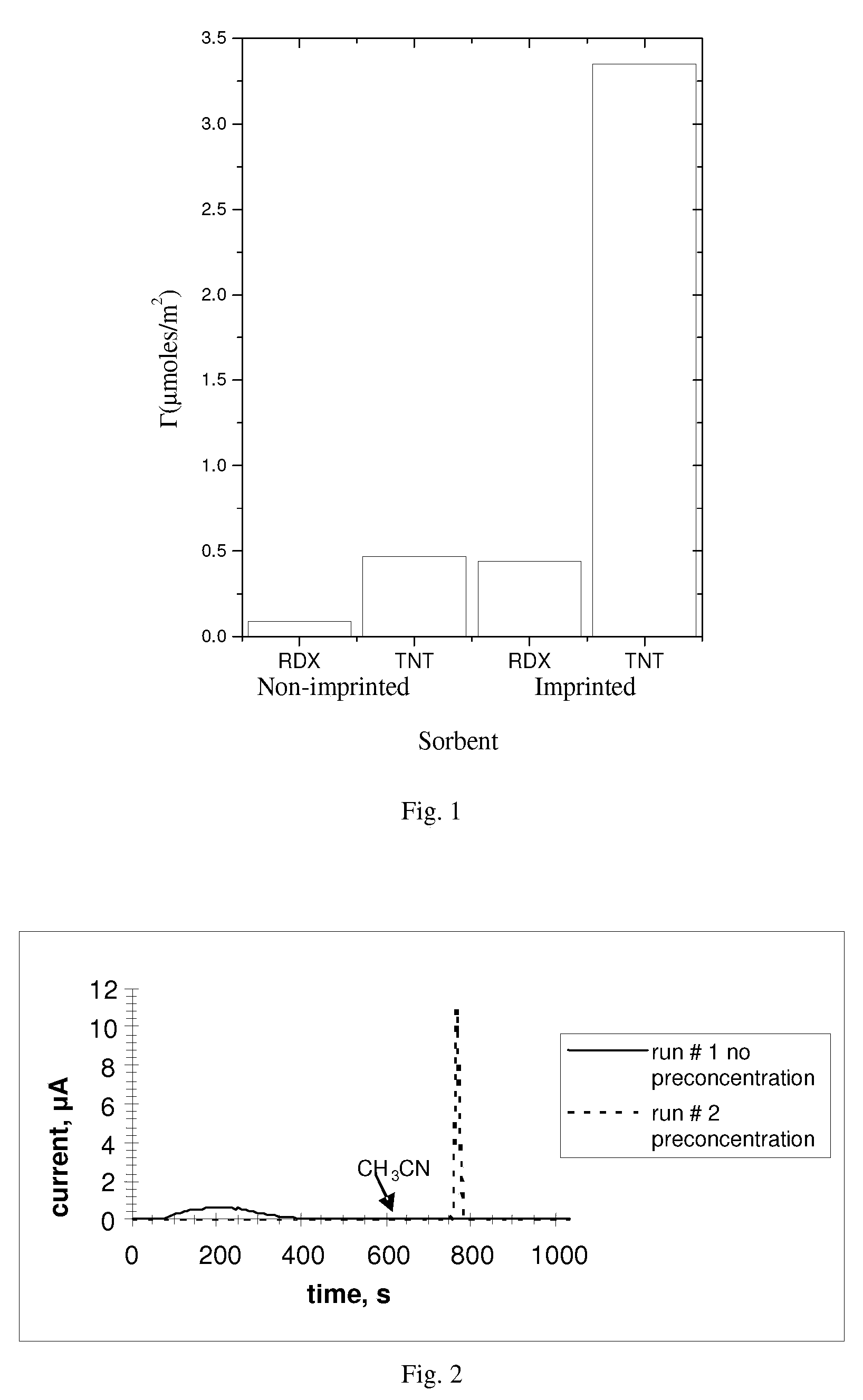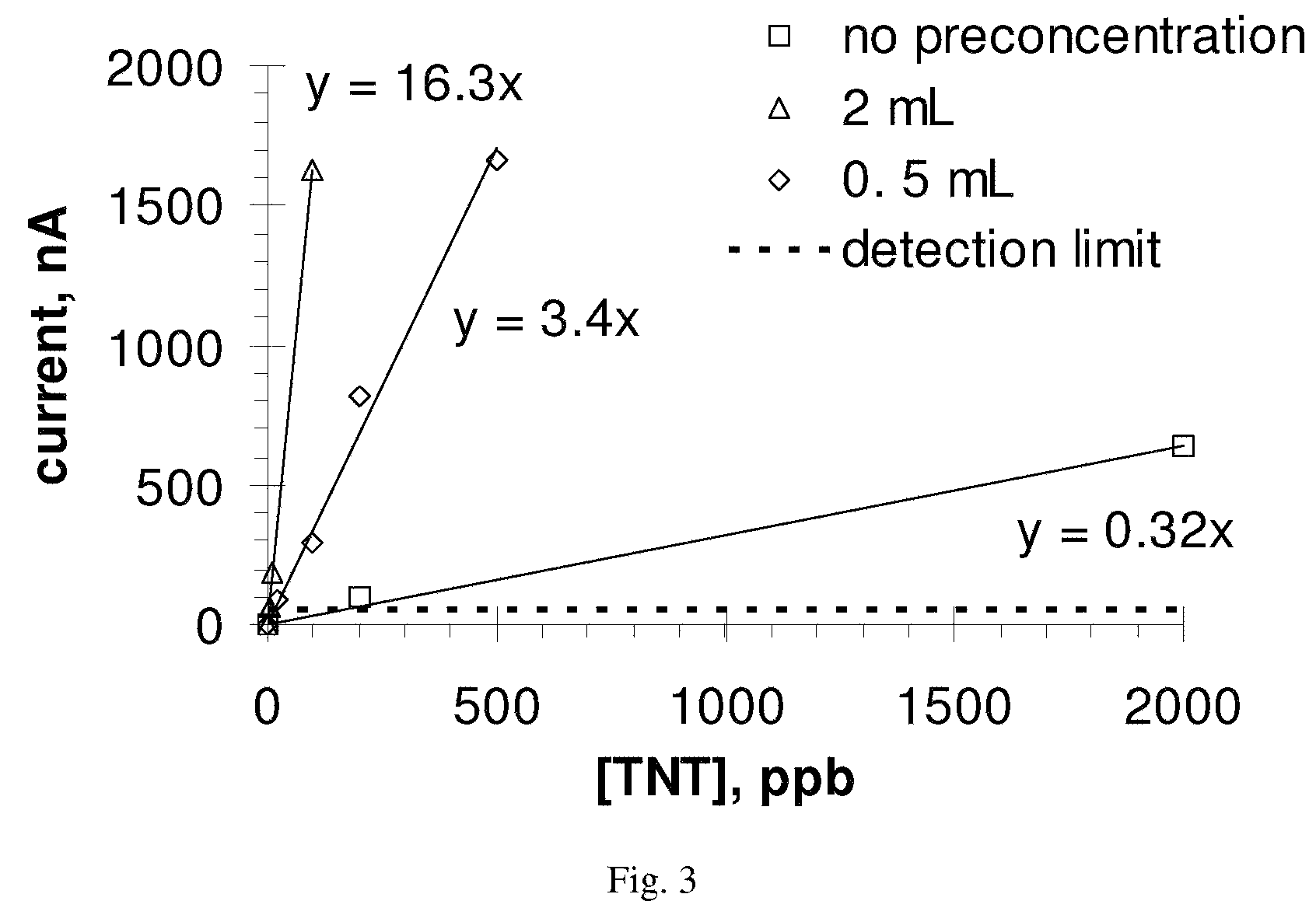Nanoporous organosilicas as pre-concentration materials for sensors
a technology of organosilicas and sensors, which is applied in the field of nanoporous organosilicas as pre-concentration materials for sensors, can solve the problems of low rate of analyte desorption from most of these sorbents, no perfect sorbent for all analytes, and inability to carry out quantitative analysis of multianalytes in portable systems, etc., and achieves the effects of low concentration of air samples, low cost, and low cos
- Summary
- Abstract
- Description
- Claims
- Application Information
AI Technical Summary
Benefits of technology
Problems solved by technology
Method used
Image
Examples
example 1
[0035]Preparation of template-directed molecularly imprinted hybrid organic-inorganic polymers—In general, arylene-bridged polysilsesquioxane materials were synthesized by the hydrolysis and condensation of trialkoxysilyl precursors under basic or acidic conditions. Brij 76 was used to increase the porosity and surface areas of these materials via the surfactant template approach. Structural characterization of these materials was carried out by nitrogen gas sorption, TGA, and X-ray diffraction (XRD). The adsorption of nitroaromatic compounds has been investigated by both batch and column testing.
[0036]The structural parameters calculated from nitrogen gas sorption measurements of two imprinted polymers are shown in Table 1. This demonstrates the formation of molecularly imprinted benzene- and diethylbenzene-bridged hybrid organic-inorganic polymers.
[0037]
TABLE 1Nitrogen gas adsorption data of porous sorbents.BET surface areaTotal Pore VolumeBJH PoreTDMI polymer(m2 / g)(cm3 / g)Diameter...
example 2
[0038]Selectivity for TNT—Adsorption studies for TNT removal from aqueous soil extracts (containing TNT and natural organic matter) from highly contaminated soils from Umatilla Army Depot Activity, Hermiston, Oreg. showed high removal of TNT in the presence of soil organic matter (FIG. 1). This demonstrates that the TDMI polymer has shown selectivity for TNT over other aromatics from multi-component solutions in varied and complex environments. This also demonstrates the utility of the TDMI polymer to efficiently pre-concentrate TNT with a low volume of extraction solvent and that adsorption was unaffected by DOC.
example 3
[0039]In-line sampling—TNT (500 μL at 2 ppm) was pre-concentrated using a microcapillary-column packed with 10 mg of a nanoporous organosilicate imprinted for TNT. The micro-column was placed in-line with a low-pressure injector loop and a syringe pump before the electrochemical detector. After pre-concentration of the sample, the TNT was rapidly eluted from the column with CH3CN. The electrochemical response of TNT dramatically improved compared to an identical assay with no pre-concentration (FIG. 2). The response time was a function of the slow flow rate used and further engineering can greatly reduce the response time. The peak response was much sharper with peak amplitude increased by an order of magnitude. Further experiments increasing the pre-concentration volume with lower TNT concentrations demonstrated the potential to rapidly detect TNT at trace levels (ppb) (FIG. 3). This demonstrates that the TDMI polymer is an efficient pre-concentration material for effective detecti...
PUM
| Property | Measurement | Unit |
|---|---|---|
| pore size | aaaaa | aaaaa |
| concentration | aaaaa | aaaaa |
| concentration | aaaaa | aaaaa |
Abstract
Description
Claims
Application Information
 Login to View More
Login to View More - R&D
- Intellectual Property
- Life Sciences
- Materials
- Tech Scout
- Unparalleled Data Quality
- Higher Quality Content
- 60% Fewer Hallucinations
Browse by: Latest US Patents, China's latest patents, Technical Efficacy Thesaurus, Application Domain, Technology Topic, Popular Technical Reports.
© 2025 PatSnap. All rights reserved.Legal|Privacy policy|Modern Slavery Act Transparency Statement|Sitemap|About US| Contact US: help@patsnap.com



